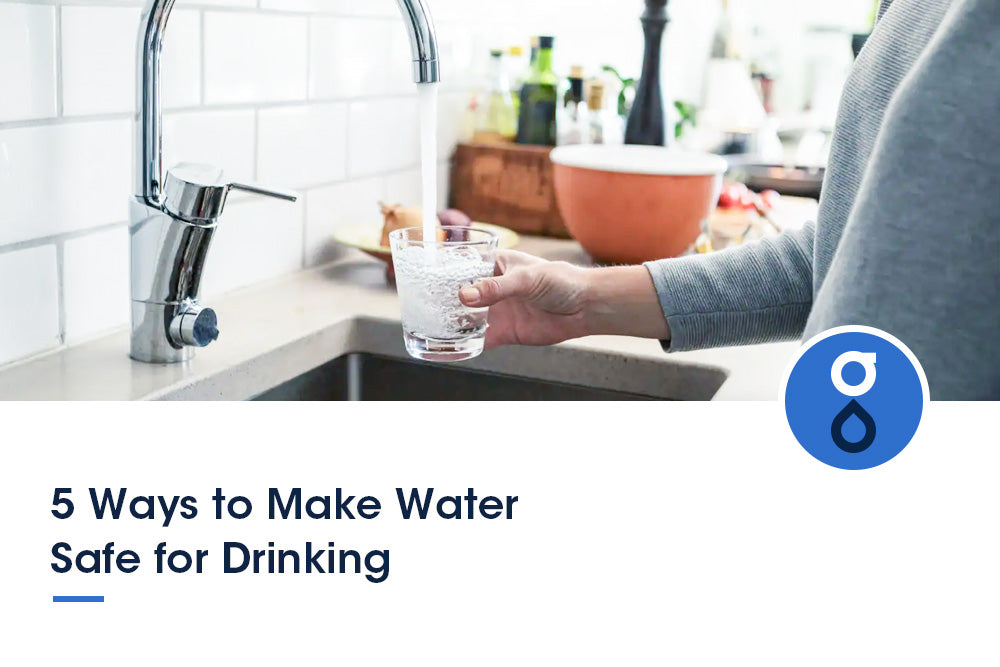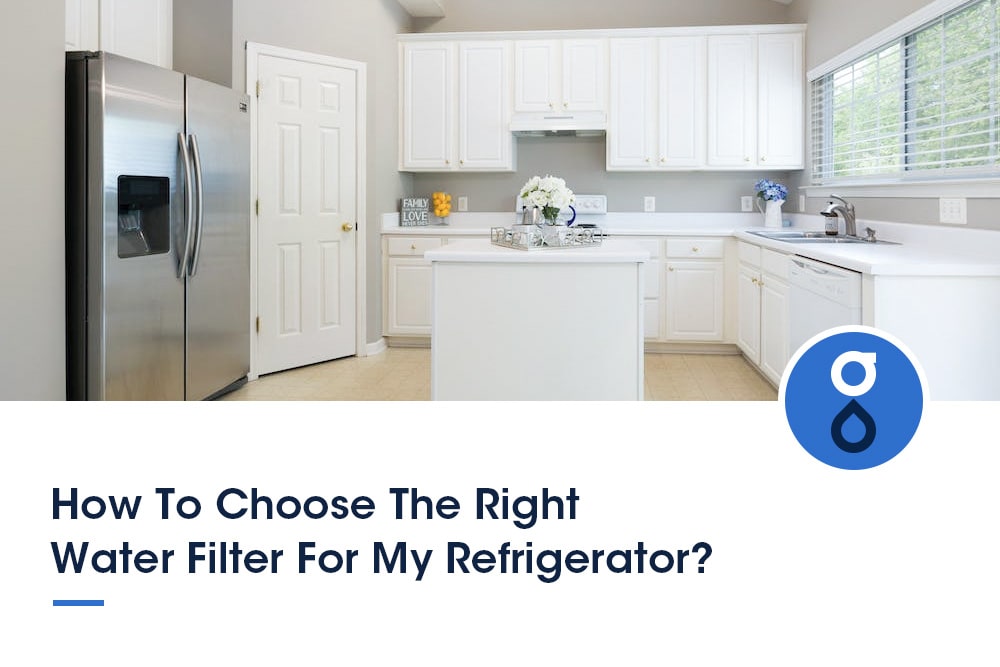Table of Contents:
1. Boiling
2. Disinfect
3. Distillation
4. Using UV light
5. Filtration
Glacier Fresh Water Filters
Conclusion
Unsafe water contains both organic and inorganic contaminants. Organic contaminants such as viruses and bacteria found in water cause waterborne diseases. Inorganic contaminants like insecticides, pesticides, and heavy metals make water unsafe.
As soon as you suspect the water is unsafe, do not drink, do not wash dishes nor make food with the water,
So the question remains, how can you make water safe for drinking?
This article will discuss five ways to make water safe for drinking. We will also dig deeper to find out how each method works.
If you find out your water is unsafe or contaminated, use the below methods to purify the water.
1. Boiling

Unsafe water contains germs and salts. These are the main causes of diseases like typhoid, cholera, and other health problems.
Boiling water is one of the oldest and most effective ways to purify drinking water. The boiling temperature for water is 100 degrees Celsius. This makes it impossible for bacteria, parasites, and any virus in the water to survive.
Additionally, boiling your water will remove salt particles. Within a few minutes of boiling the water, all the microorganisms will have died. In the end you will get clean water which is safe for drinking.
Steps to boil drinking water
Step one: Filter cloudy water
Dirt and other debris found in the water make it cloudy. If your water is cloudy, put it into a jar and leave it for a few minutes to settle down. This allows sediments to settle at the bottom, making it easy for you to filter them out.
Use a clean cloth, paper towel, or coffee filter to filter the cloudy water.
If you are using a clean cloth, place it on top of the jar and use a rubber band to secure it. Then pour all the water through the cloth carefully.
Step two: Boiling
Pour the filtered water into a boiling pot and leave it to boil until bubbles start to form.
If you are heating large quantities of water, it will take a while to bubble.
Step three: Cooling the water
You need to cool the water before using it. After boiling the water, leave it for around 30 minutes to cool down.
You can tell whether the water has cooled down by using a kitchen thermometer.
Step four: Adding salt
Boiling water removes salt particles making the water taste flat. To improve the taste of your water, add salt and stir thoroughly.
2. Disinfection

If boiling water is not an option for you, try making water safe using disinfectants. This method is suitable for purifying drinking water in small quantities. Chemical disinfectants such as iodine, and chlorine dioxide tablets come in handy. These disinfectants kill different kinds of viruses and bacteria found in water.
Note that using disinfectants to purify drinking water is less effective than boiling. The disinfectants do not destroy stubborn germs like the parasites Giardia and Cryptosporidium . Also, you cannot use disinfectants to purify water that has radioactive material.
You kill bacteria Cryptosporidium using chlorine dioxide tablets. But you have to keenly follow the instructions given by the manufacturer.
3. Distillation

Distillation is an effective method that kills germs making drinking water safe. The process is most effective when purifying water in small quantities, not on a large scale.
The process involves heating water and collecting the water back in vapor form.
Water has a lower boiling point than disease-causing germs and other contaminants. Heating water until it evaporates leaves the contaminants and germs in the container.
Steps to follow
Step one: You need to heat the water until it reaches its boiling point of 100 degrees Celsius.
Step two: Leave the boiling water until it turns into steam.
Step three: Direct the vapor into the condenser and let it cool down.
Step four: After cooling, the vapor will be reversed into clean and safe water for drinking.
Distillation process removes bacteria, salts, germs, and heavy metals like mercury and lead.
Even though the distillation method helps to clean water, it has a few demerits. It is a very slow process that will take a lot of your time. Additionally, the process requires a lot of heat to boil the water, which could cost you a lot of money.
4. Using UV light
 You can also use Ultraviolet light to make water safe for drinking. It is best when you are disinfecting small amounts of water.
You can also use Ultraviolet light to make water safe for drinking. It is best when you are disinfecting small amounts of water.
You only need to buy portable units which have a measured UV light dose. Put the device in the water and leave it for a few minutes. Remember to always follow the manual provided by the manufacturer throughout the process.
One disadvantage of using UV lights is they cannot remove large particles. For this reason, you will need to remove the large particles if you want the device to work. You can use a clean cloth or a coffee filter to remove the large particles.
5. Filtration

Water filtration removes large particles, heavy metals, and bacteria in unsafe water. Water filters used in the filtration process have activated carbon. The activated carbon comes from organic materials like charcoal granules and coconut shells.
Activated carbon filters attract impurities and pollutants that make water unsafe for drinking. These filters can remove up to 81 compounds and take out more than 12 herbicides. Additionally, the activated carbon removes any unpleasant smell and odor from the water.
Always remember to replace your water filters for efficient results. If you have a large water filtration system, you need to replace the filter after six months. For those of you with small water filters, replace them regularly if you want the filtration system to last long.
By using the filtration method to purify your drinking water, you will end up using less money.
Glacier Fresh Water Filters
If you are looking for powerful and cost-effective water filters, we at Glacier Fresh have you covered. We have some of the best water filtration system in the market right now, and we are certified by NSF.
Our water filters are made from pure natural coconut shell blocks, and they are BPA-free. Also, the filters are very easy to install into your system, and they are compatible with different models.

Conclusion
We need clean and safe water for our bodies to function properly. Without clean water, you will have different health problems, which may be hard to deal with later on. If you cannot access clean water, use the above methods to make your water safe for drinking.
You can as well combine some of the methods mentioned to achieve the best results.
















